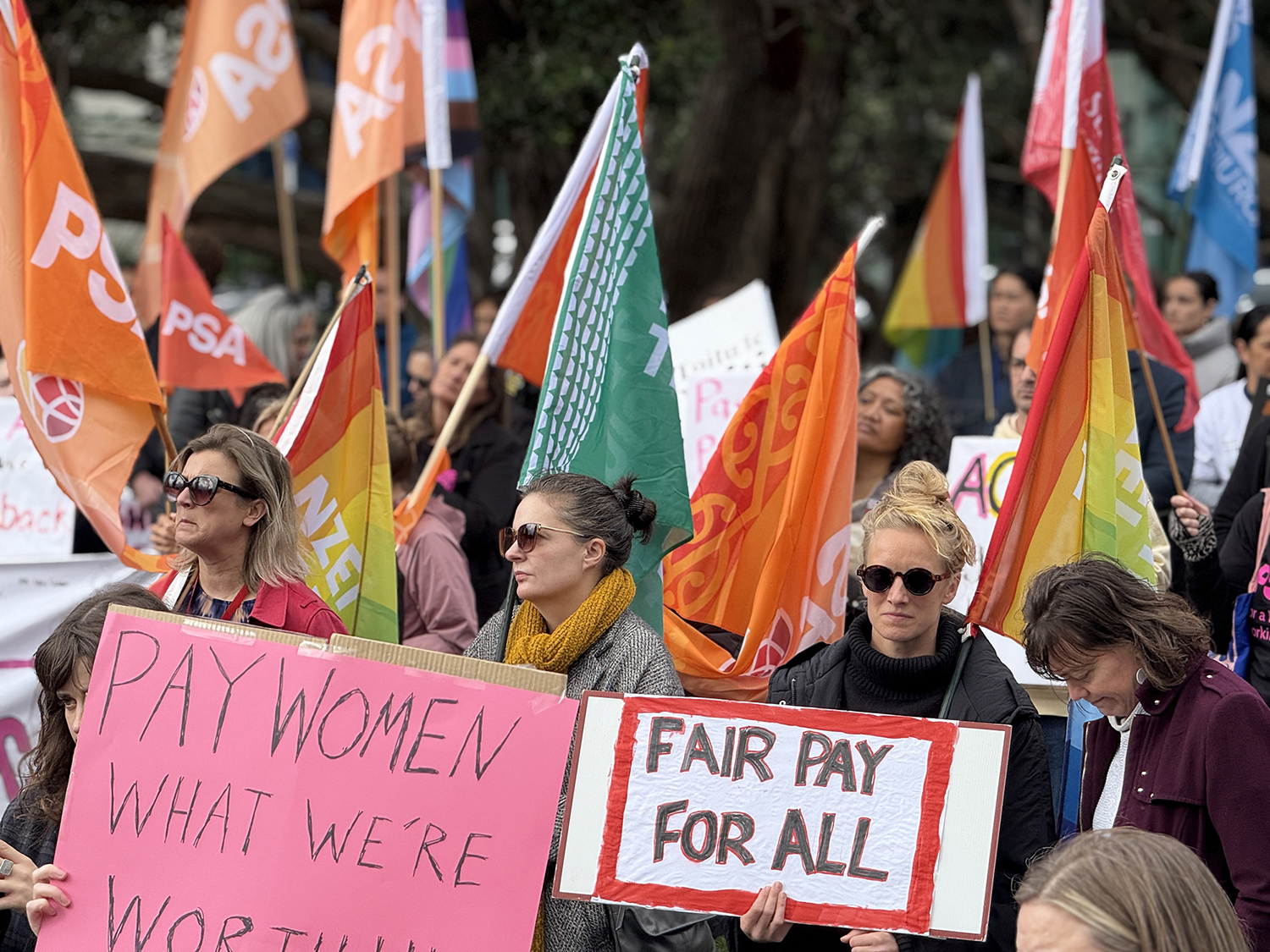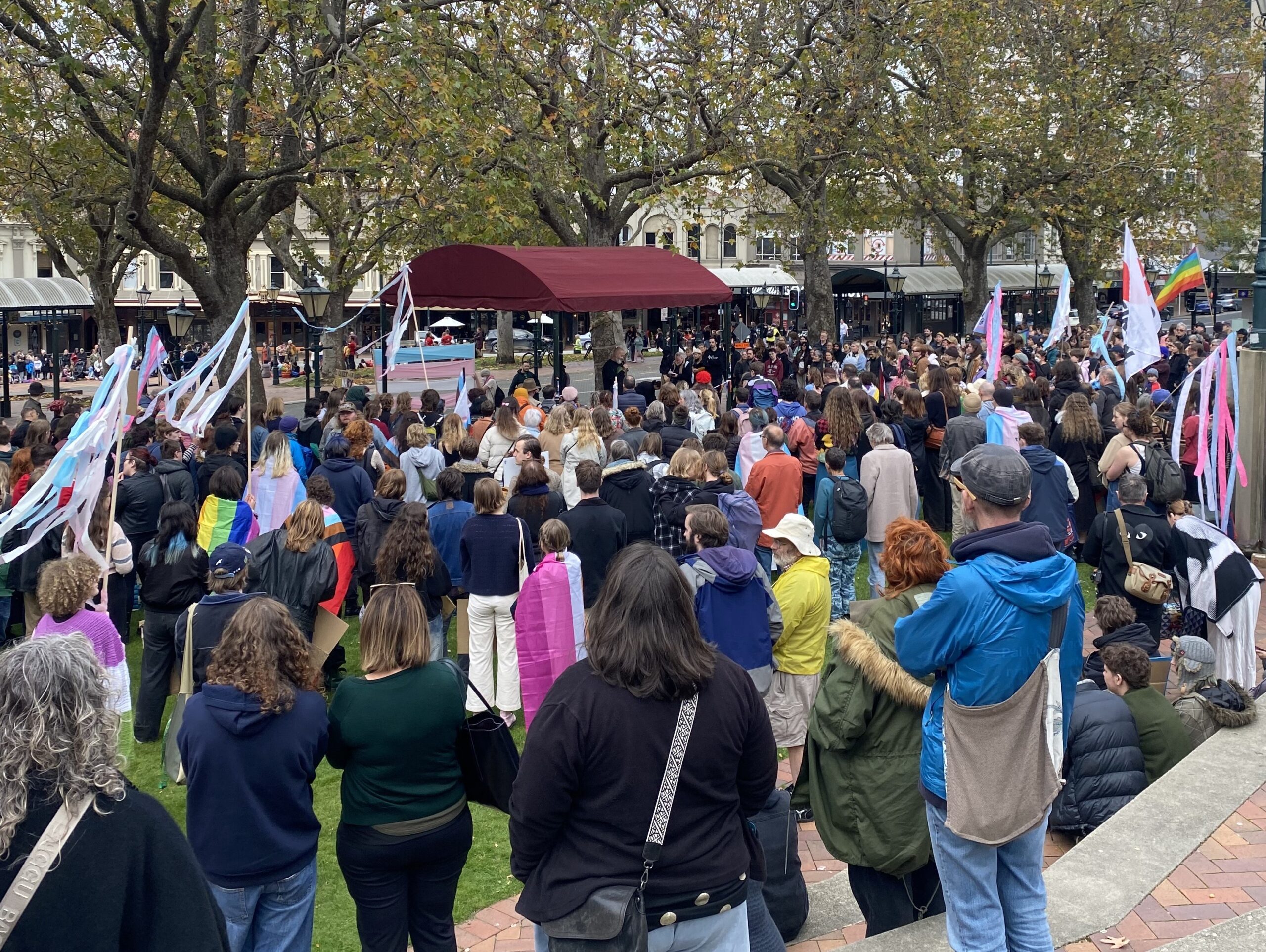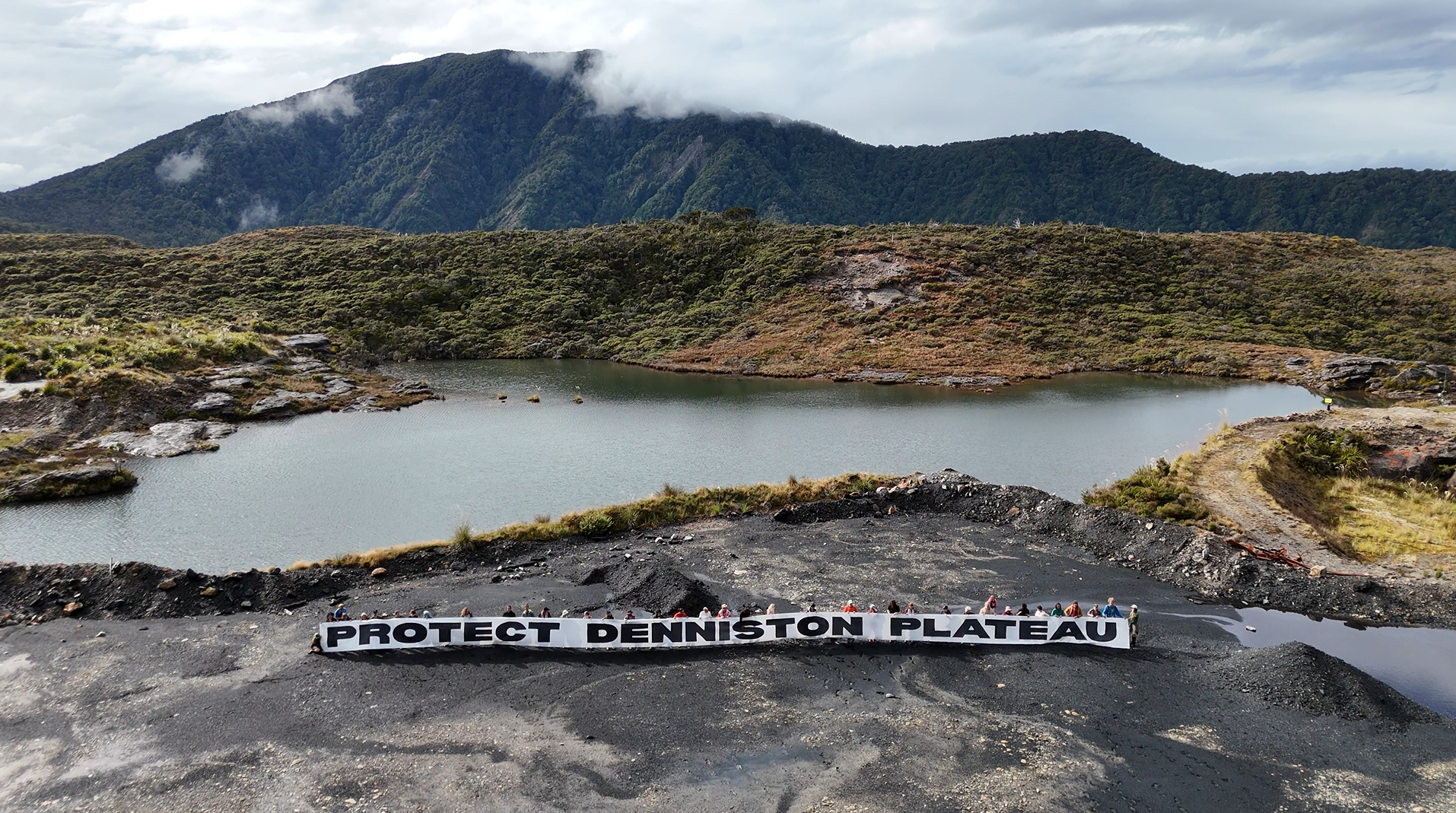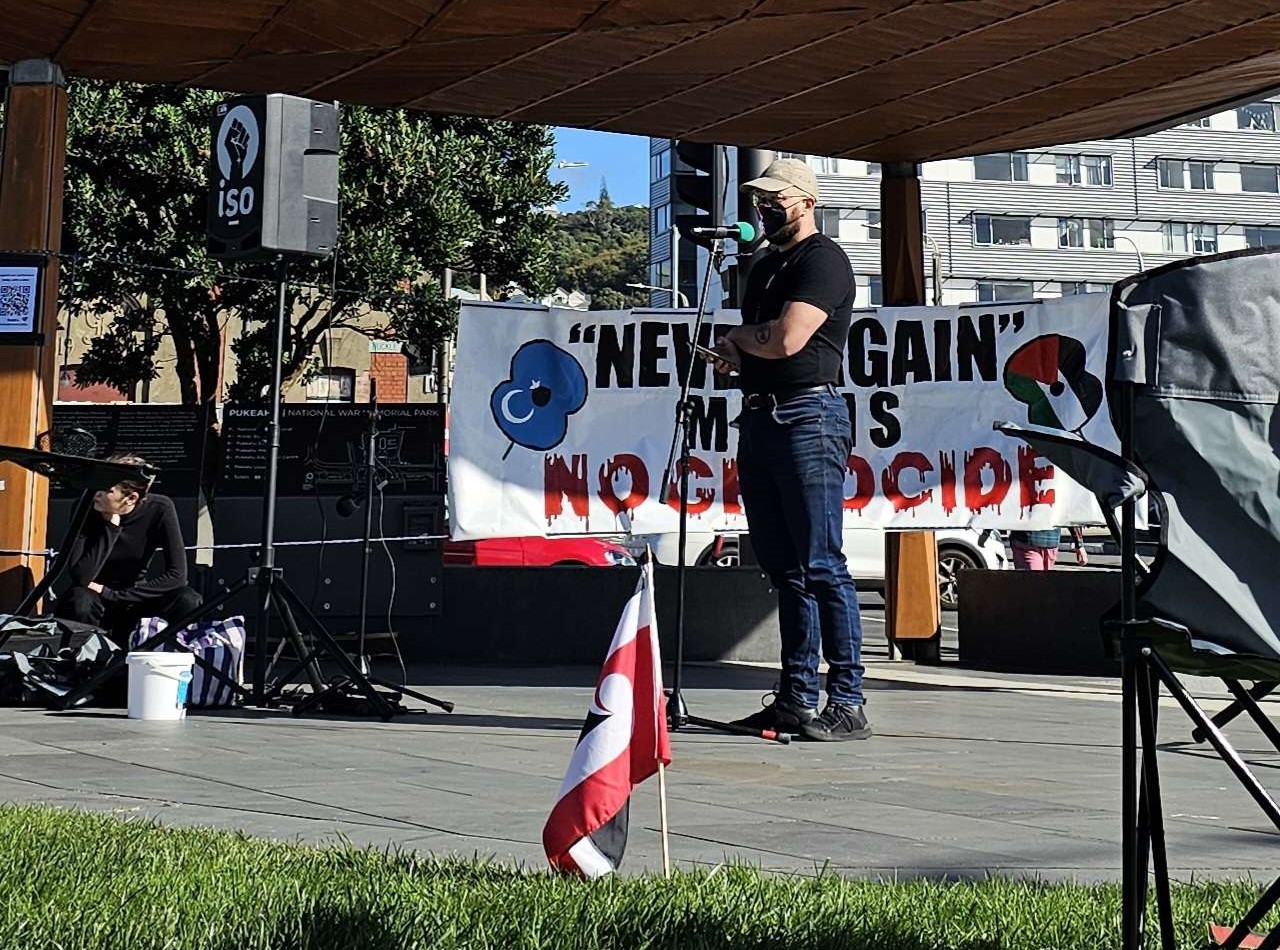The International Socialist Organisation’s position on the general election, in line with a decision at a membership conference, is summed up in the slogan: ‘Keep National Out, and Build a Socialist Alternative.’ The implication is to give the party vote to Labour, the Greens or Te Pāti Māori. In this opinion piece Grant Brookes puts an argument to narrow the field for the party vote.
Voting alone can never deliver equality, decolonise Aotearoa, liberate working people or protect the planet we depend on. It won’t even fix today’s cost of living crisis. But my contention in this opinion piece is that the best way to fight for ISO’s goals within the narrow confines of the 2023 General Election is to party vote Green, or Te Pāti Māori.
A likely National-ACT government – with or without NZ First – will accelerate the destruction of the natural world we’re part of and usher in a massive assault on living conditions and freedoms for the majority of people. Women and minorities – especially Māori and gender minorities – face attacks even more vicious.
National plans to cut $8.5 billion from public services over four years to fund tax cuts for the rich. This means job losses and pay cuts for public sector workers and less help for everyone who lacks the money to go private. People on benefits like Jobseeker Support – just $606.86 a week after tax, or $31,557 a year for a couple with children – will be less under National. A family receiving Jobseeker support will be $315 worse off in 2024, $1,023 poorer in 2025 and $2,621 poorer by 2028. As Green MP Julie Anne Genter said, “It’s hard to imagine a purer example of class warfare against the poor than National’s proposal to take a few billion from those on benefits and give it to landlords/property investors.”
These attacks would be just the opening bid in post-election negotiations. ACT wants spending cuts four times deeper to siphon even more cash for the rich.
Students will lose half price fares – and they’ll lose free fees for the first year of study as well, if ACT gets their way. Older working people will have to labour longer, as the retirement age is raised to 67.
If National leads the next government, planned Fair Pay Agreements setting minimum pay and conditions across an industry will scrapped. Every time any worker starts a new job they could be fired in the first 90 days for no reason at all. Landlords will again be allowed to evict tenants without cause.
National will ditch public transport projects to fund more tarmac, for more cars. Aotearoa’s biggest climate polluter, the agriculture sector, will be subsidised by consumers for years longer as farmers continue to pay nothing for emitting half of New Zealand’s greenhouse gases.
Tangata whenua will be shoved deeper into second class status in their own land. National will scrap the Māori Health Authority, Te Aka Whai Ora. ACT wants to go much further – abolishing all government watchdogs and advocates for minorities, and to abolish the Ministry for Women as well. NZ First has pledged with withdraw from the UN Declaration on the Rights of Indigenous People.
A National-led government will manage a massive transfer of wealth and power to the capitalist elite. It will embolden employers, landlords, racists and the far right to go on the attack in our workplaces and communities. Faced with this prospect, every effort must be expended between now and 14 October to boost the vote for the left parties, to “Keep National out.”
But what kind of alternative would a Labour-led government be? The past three years gives some indication. Ruling alone without the influence of coalition parties around the cabinet table, Labour did deliver some improvements in the lives of working class and oppressed people, such as:
- Lifting the adult minimum wage from $18.90 to $22.70
- Raising student allowances by $25 a week
- Enabling gender self-ID on birth certificates
- Introducing half price fares for all on public transport (later pared back to young people and Community Service Card holders only)
- Creating the Winter Energy Payment to help with power bills
- Making prescriptions free
- Legislating for Fair Pay Agreements
- Creating the Matariki public holiday
But of the “100 achievements” touted by Labour last November, most are too small to make a difference or are yet to be fully implemented. And the credit for many of their listed “achievements” should really go to groups who campaigned for change from outside of government.
More telling are the improvements they did not deliver. In 2017, Labour leader Jacinda Ardern said both housing and mental health in Aotearoa were in “crisis”. Six years and a $1.9 billion cash injection later, there isn’t a single new bed in a mental health unit and the 100,000 promised Kiwibuild homes never materialised. Jacinda Ardern famously declared climate change to be “my generation’s nuclear free moment.” Her government’s inaction on climate after 2017 has been documented by ISO comrades already.
Most telling of all when it comes to Labour’s record over the last three years, however, has been the biggest ever increase in the wealth of the richest New Zealanders. Economist Bernard Hickey calculated in December 2021 that policies like cash payments for businesses struggling through the pandemic, wage subsidies that saved business owners money, rising property and asset prices, and money printing cumulated to make the wealthy nearly $1 trillion richer than they were before the pandemic. (That’s trillion, with a “t”).The richest 400 individuals now own more wealth than the bottom half of the population.
When it comes to enriching the capitalist elite, there is precious little difference between Labour and National. The recent “captain’s call” by Labour leader Chris Hipkins to rule out any form of wealth tax or rent control is consistent with this – and with Labour’s previous track record in government over generations. This is why, when voting in the General Election to “keep National out”, a vote for Labour should be the last resort – something to do only in electorate contests where it’s a two-horse race between the Labour and National candidates.
There are however two other parties in parliament with policies to take on the mega-rich – and to target racism and oppression and strengthen environmental protection, as well. Te Pāti Māori is one which I have written about previously. It’s worth repeating here that they have given “a hard no” to supporting a National-ACT government in 2023, but the focus in this article is why socialists should support a party vote for the Greens – and to support an electorate vote for the Green candidate where they’re in a two-horse race with Labour.
Green Party policies in the 2023 election are not the policies which would be put forward by a socialist party. Their campaign priorities don’t target the roots of climate change, inequity and the cost of living crisis which lie in colonisation and the capitalist economic system. But they do propose reforms to relieve immediate pressures and represent steps forward for people and planet, including:
- Wealth tax targeting the richest 1%
- Income Guarantee of at least $385 per week for an individual, or $985 for instance for a couple with one child
- Hoki Whenua Mai Policy to return land to Māori
- Rent controls, warrant of fitness regulations requiring all rentals to be safe, warm and healthy
- Free dental care for everyone
The problem for the Green Party, however, is that even in the best case scenario – where they’re in a position to support a Labour-led government after 14 October – these policies won’t be adopted.
Party co-leader James Shaw repeats the mantra that more Green MPs in the next parliament and more Green ministers in the next government will give them the power to direct decision-making and deliver on their policies. This is pure wishful thinking. Greens in government would meet implacable opposition – and not only from a larger group of Labour ministers who will easily out-vote them in cabinet (as they did when they overruled James Shaw’s directions as Climate Change Minister last December).
More importantly, Greens in government would run up against the real power in this country – the capitalist class, which is much more opposed to Green policies than the Labour caucus, controls bigger investment flows than the government and retains armies of lawyers and paid opinion-shapers. I am old enough to remember the 1984 General Election, when capitalists moved investments off shore and crashed the New Zealand dollar, plunging the country into a constitutional crisis, pressuring Prime Minister David Lange to abandon many of Labour’s policies and forcing the government to implement the “Rogernomics” neoliberal reforms which haunt us to this day. So while more Green MPs is something socialists should campaign for, it’s not mainly for the reason given by James Shaw.
James Shaw claims that, “Our ability to raise revenue in order to pay for the policy proposals that we’re putting on the table will come down to the strength of the hand that we’re dealt with on election night.” But the only strength capable of countering the power of the capitalist class and the government is the power of working class collective action.
So while James Shaw is mistaken, a strong party vote for the Greens will nonetheless help to build the power capable of fighting for policies like the 2023 Green Party priorities listed above. A strong party vote for the Greens will also create more favourable conditions for building socialist organisation, rooted in unions and communities, dedicated to mobilising the power of collective action by tangata whenua and tangata tiriti.
Green Party members, and some MPs and candidates, have been part of mobilising such flaxroots power themselves, alongside socialists, indigenous activists, migrant rights campaigners, LGBTQI+ defenders, environmentalists, disability advocates and trade unionists. Greens in parliament have amplified these struggles and challenged authorities to listen – especially over the last three years, as they spoke out against the Labour government on issues outside of agreed “areas of cooperation” between the two parties. Greens have stood repeatedly with people taking collective action, including:
- Land protectors at Ihumātao
- Striking nurses
- Antifascists countering the far right
- Striking teachers
- Trans rights defenders
- Striking firefighters
- Care and support workers battling for pay equity

Although the Greens are not a socalist party – and there is a sizeable anti-socialist current within it – there are socialists among its membership. They could arguably include third-ranked MP Chlöe Swarbrick, who has publicly identified in the recent past as a “democratic socialist.” Nine of the 31 candidates on the Green Party list have pledged that, if elected, they will “promote values such as Te Tiriti partnership and anti-capitalism in their work.” More anti-capitalist voices in parliament will help to popularise socialist ideas.
Opinion polls today show overwhelming support for left policies like a wealth tax and rent controls. Unions and community organisations are increasingly on board. There is huge potential to for a fighting left to build united mass campaigns outside parliament for these reforms. This potential will be strengthened further by a strong Green vote on 14 October.
Green success, however, is a two-edged sword. If party leaders did succeed in their ultimate goal of entering a Labour-led government, the ability of Green MPs to continue standing with striking public sector workers, land occupiers or protesters would be severely constrained. Party members would also be less likely to campaign against a government with Green MPs in it. This is why it’s important to build a socialist alternative. But even in this scenario, more votes for Green MPs and Green policies will raise public expectations about what is possible. It would give encouragement and provide more favourable conditions for organising and for building a fighting left.
In the more likely scenario of a victory on 14 October for Christopher Luxon and David Seymour, more Green MPs (and more Te Pāti Māori MPs) will strengthen battles against the government and help to build a fighting left. And while we may soon have the most extreme right-wing government in generations, it’s important to remember that collective action by workers and iwi challenges scored wins against the last National-led government under Prime Minister John Key.
In 2008 National campaigned on the same education policy they have today, to subject primary school pupils to “national standards” which rank them against their peers. The teacher union NZEI Te Riu Roa campaigned vigorously against this scheme to divide children into “winners” and “losers”. Supported by parents, school boards and education academics, the campaign involved rallies, an organised boycott of national standards and a refusal to use the Ministry of Education’s online reporting tool. Kura kaupapa across Aotearoa put a blanket ban on national standards. By the time National was voted out in 2017, nine years after campaigning for the policy, less than a quarter of schools had fully implemented it. Collective action by unions and iwi made sure that the incoming Labour-led government of Jacinda Ardern would roll back the unpopular scheme.
In 2011, ACT Party education policy included the creation of “charter schools.” These would be funded by the taxpayer but privately-run. They would not have to employ registered teachers and could teach their own curriculum, such as one based on fundamentalist Christianity. The PPTA teachers union led a strong campaign to stop them. By the time National and ACT lost the 2017 General Election, just seven charter schools had been established, enabling them to be easily integrated back into the public education system by Jacinda Ardern’s government. ACT is again campaigning for charter schools. Working class collective action can beat them again.
Mass action and iwi opposition also contributed to the demise of the Trans-Pacific Partnership Agreement. In 2013, John Key said the deal was on track for completion by the end of that year. Protests against the TPPA had already begun, and continued to grow ever larger, shifting public opinion and forcing the opposition Labour Party to abandon decades of bipartisan consensus on foreign affairs and trade. Māori lodged a claim in the Waitangi Tribunal alleging the TPPA breached Te Tiriti o Waitangi. Popular opposition in Aotearoa connected to similar movements overseas helped to derail John Key’s plans, stall the TPPA and eventually sink it.

National’s privatisation plan met similar opposition. Thousands marched in 2012 in the Aotearoa Not For Sale Hīkoi down the length of the North Island, led by the pro-worker MANA Party, with numbers peaking in Auckland and Wellington. A petition for a citizens-initiated referendum attracted more 300,000 signatures and the resulting referendum showed a two to one majority against the asset sales. The Māori Council took a claim to the Waitangi Tribunal, delaying the sale of state-owned Mighty River Power.
And in 2015, 32,000 people joined the People’s Climate March – Aotearoa’s largest climate protest up until that time – demanding that the government sign up to climate action at the Paris Climate Summit. John Key’s government ratified the Paris Agreement, despite opposition from the ACT coalition partner.
In all of these mass campaigns against the last National-ACT government, the Green Party played a role, demonstrating again why they should be supported. But while socialists should vote Green-Te Pāti Māori on 14 October, whatever the election outcome our priority must be building a fighting left to mobilise the power of the working class to win.









